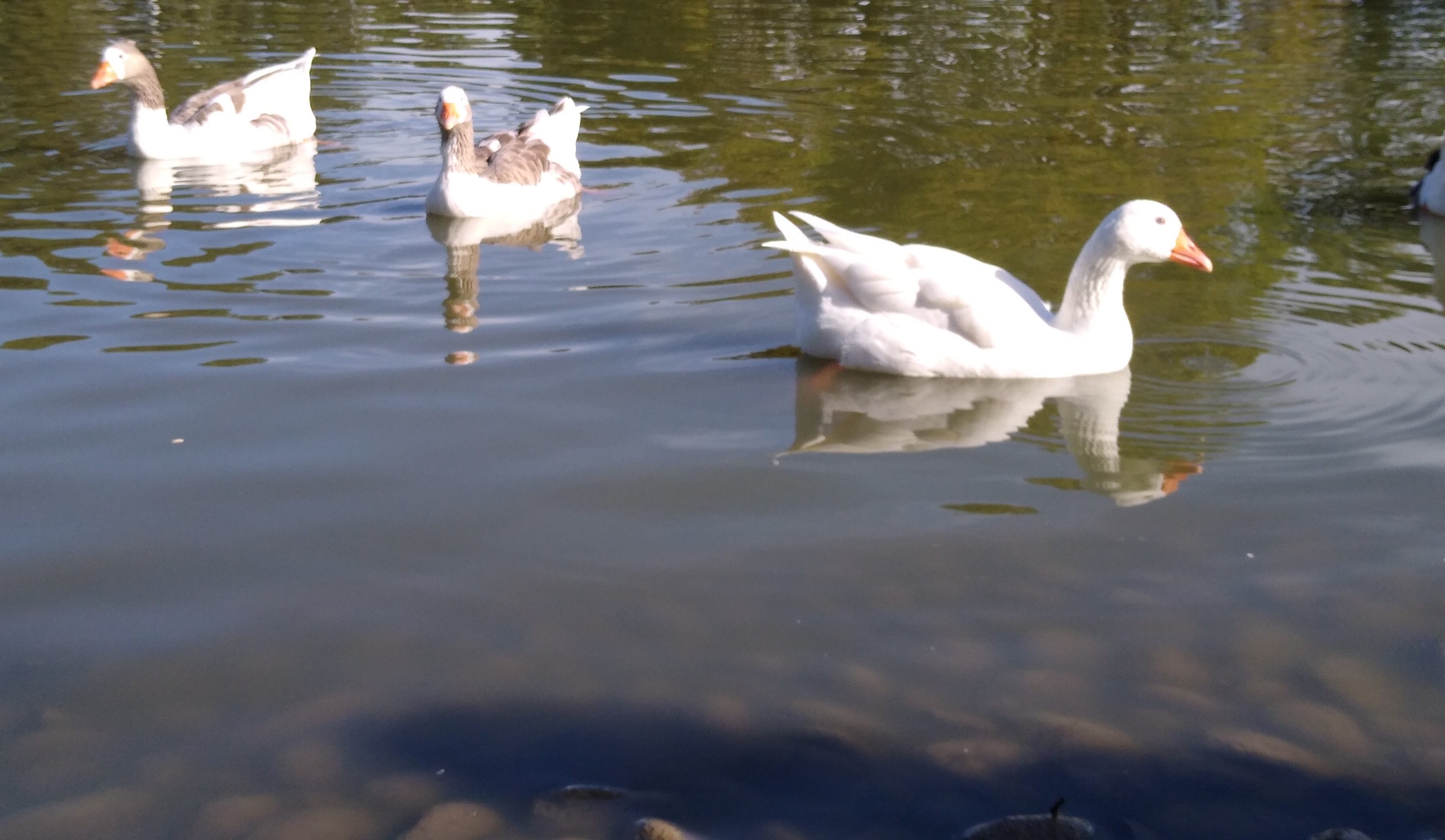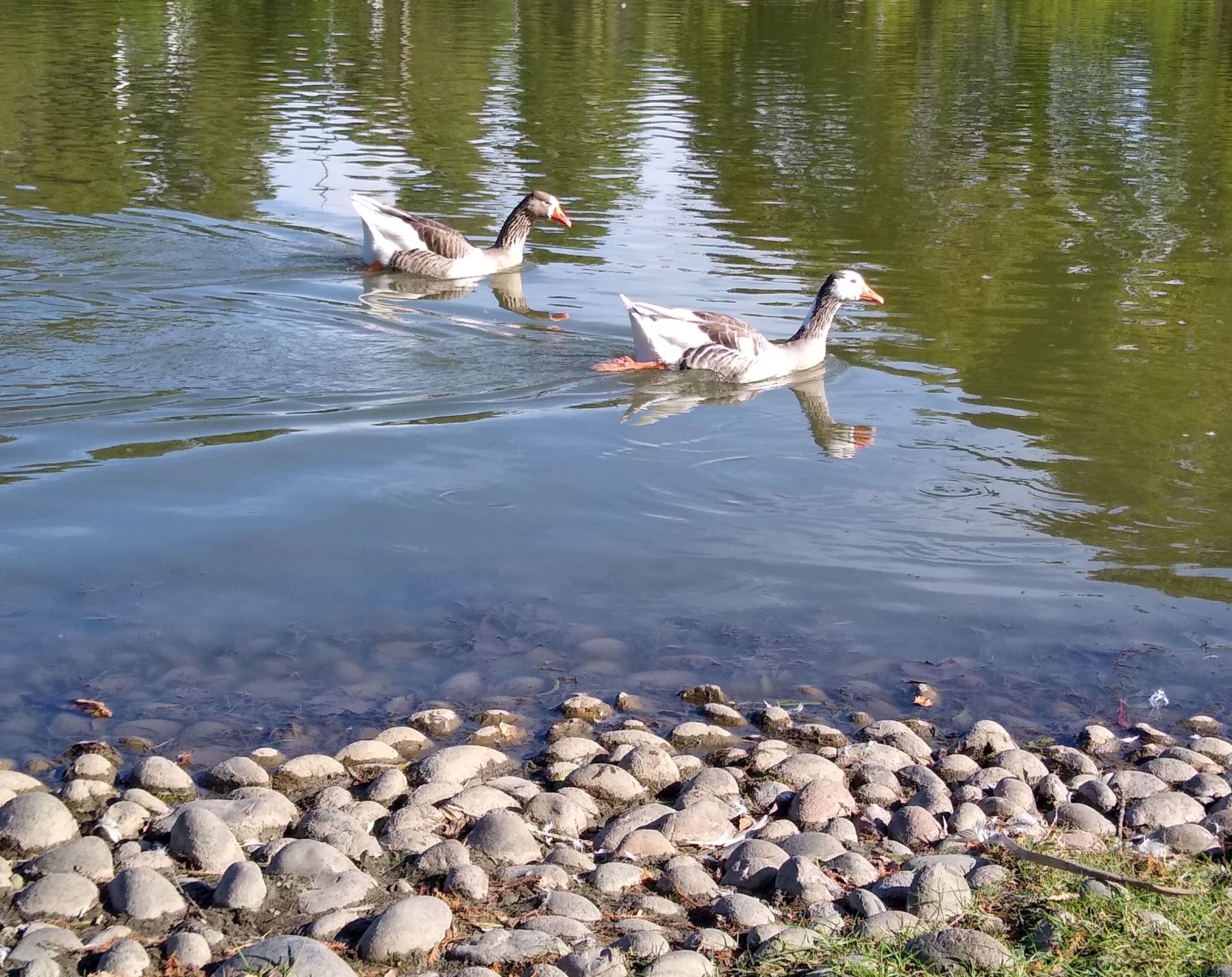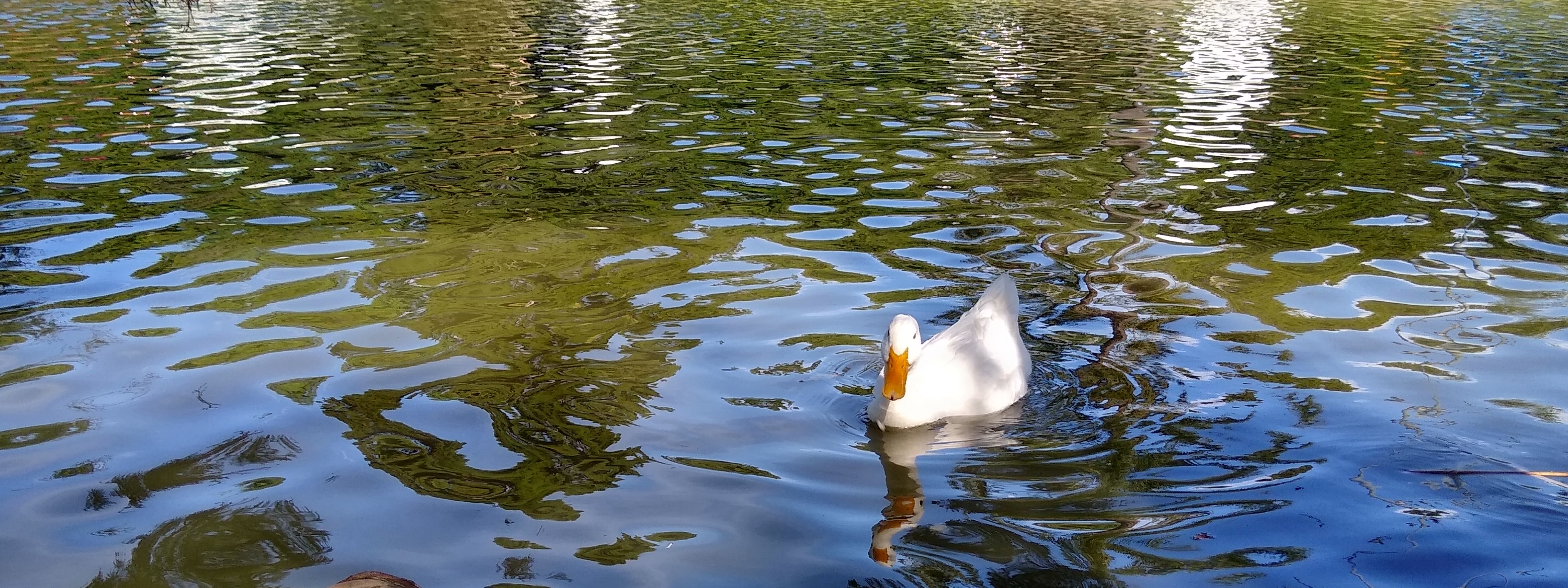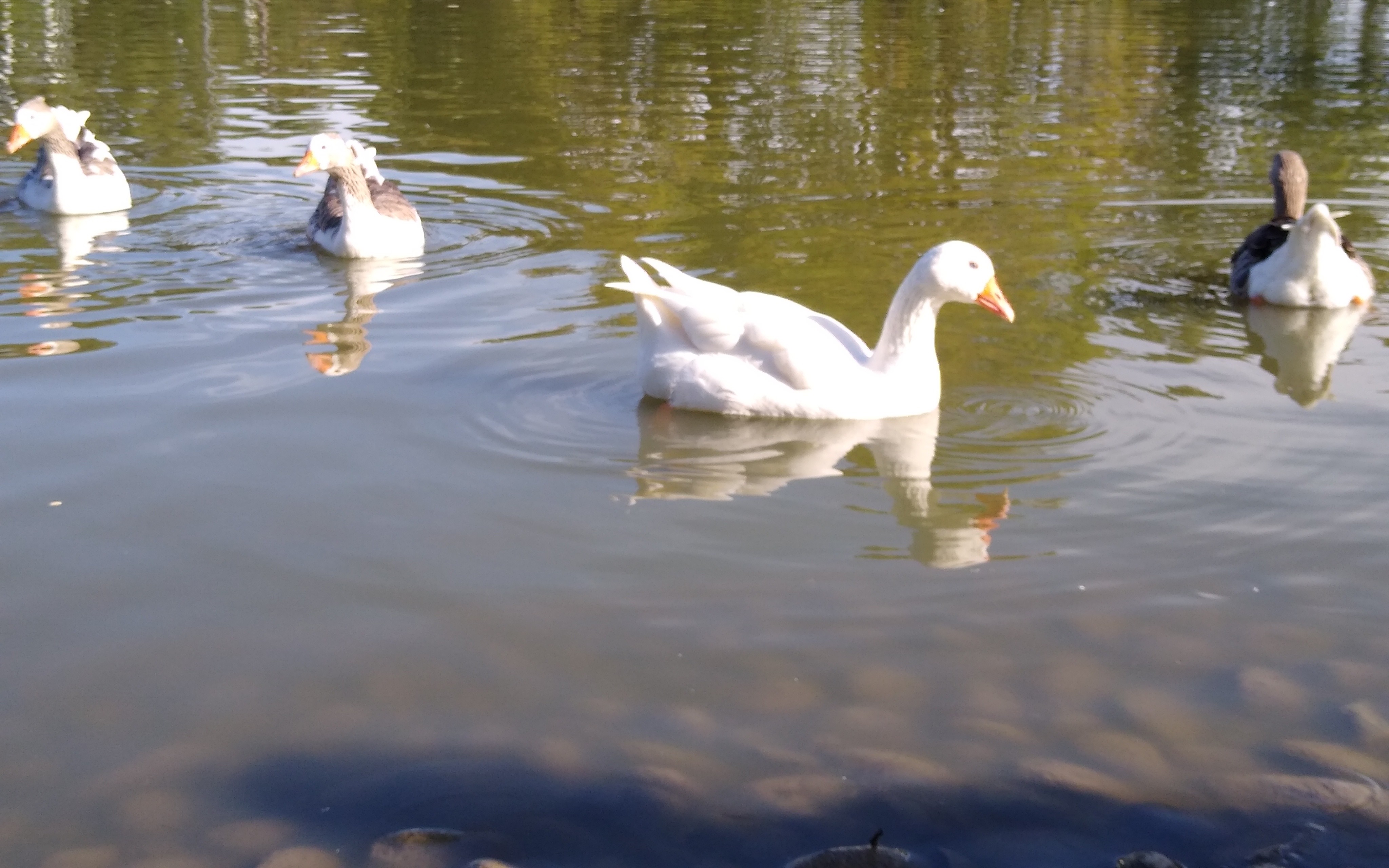Emerald Lagoon || Lago Esmeralda [ENG/ESP]

Deep in a valley surrounded by hills covered with ancient pines and oaks, there was a crystal-clear lagoon known to the locals as Emerald Lagoon. Its name came from the peculiar greenish hue the water took on when the sun rose over the horizon. But beyond its natural beauty, what truly made it special was the presence of a flock of white ducks that had inhabited its waters for generations.
These ducks were unusual. Their feathers were so white they shone like freshly fallen snow, and their orange beaks always seemed to evoke a smile. They were peaceful, curious creatures with a strange wisdom in their eyes. The villagers told stories about how the lagoon's ducks were the keepers of the forest's secrets and that, if one spent enough time observing them, one could hear ancient songs in their quacks that spoke of the valley's origins.

Every morning, at dawn, the ducks would emerge from their small refuge among the reeds at the northern end and swim slowly toward the center of the lagoon. Their swimming was harmonious, like an ancient choreography learned by instinct. They glided silently across the water, leaving soft wakes that disappeared in the wind. Sometimes they submerged briefly in search of food, and other times they simply floated, lulled by the gentle current of dawn.
But one day, the routine was interrupted. A violent storm swept through the valley. The sky, once clear and blue, was covered with dense, gray clouds. The wind howled through the trees, and the rain fell like glass curtains. For three days and three nights, the lagoon churned violently. No one saw the ducks. The worried villagers feared they had fled or, worse, had been swept away by the turbulent waters.
When the sun finally rose again, the lagoon was covered with branches, leaves, and tree remains. It was a sad, gray landscape. However, at noon, just as the sun's reflection touched the center of the lagoon, a faint quack was heard. Then another. And another. From the reeds, one by one, the white ducks emerged, unharmed but tired. They had found refuge in a cave next to a small, hidden waterfall, where they waited for the storm to pass.
Joy returned to the valley. Children ran to the shore to see them, and the elders recounted how, in their youth, they had also witnessed the miraculous return of the ducks after a great storm. From that day on, every year, the villagers celebrated Return Day, a festivity with music, paper lanterns, and bread rolls shaped like white ducks. And in the lagoon, the protagonists swam peacefully, as if nothing had happened, proud of their role at the heart of the community.
Because the white ducks of Laguna Esmeralda weren't just birds swimming in a mirror of water; they were symbols of hope, resilience, and the beauty of the eternal amidst change.



En lo más profundo de un valle rodeado de colinas cubiertas de pinos y robles centenarios, existía una laguna cristalina conocida por los lugareños como Laguna Esmeralda. Su nombre se debía al peculiar tono verdoso que adquiría el agua cuando el sol se alzaba sobre el horizonte. Pero más allá de su belleza natural, lo que verdaderamente la hacía especial era la presencia de una bandada de patos blancos que habían habitado sus aguas por generaciones.
Estos patos no eran comunes. Sus plumas eran tan blancas que relucían como nieve recién caída, y sus picos anaranjados parecían siempre dibujar una sonrisa. Eran criaturas pacíficas, curiosas y con una extraña sabiduría en la mirada. Los aldeanos contaban historias sobre cómo los patos de la laguna eran los guardianes de los secretos del bosque y que, si uno pasaba suficiente tiempo observándolos, podía escuchar en sus graznidos antiguas canciones que hablaban del origen del valle.

Cada mañana, al despuntar el alba, los patos salían de su pequeño refugio entre los juncos del extremo norte y nadaban lentamente hacia el centro de la laguna. Su nado era armonioso, como una coreografía milenaria aprendida por instinto. Se deslizaban sobre el agua en silencio, dejando estelas suaves que desaparecían con el viento. A veces se sumergían brevemente en busca de alimento, y otras simplemente flotaban, mecidos por la corriente suave del amanecer.
Pero un día, la rutina se vio interrumpida. Una fuerte tormenta azotó el valle. El cielo, antes azul y despejado, se cubrió de nubes densas y grises. El viento aullaba entre los árboles, y la lluvia caía como cortinas de cristal. Durante tres días y tres noches, la laguna se agitó violentamente. Nadie vio a los patos. Los aldeanos, preocupados, temieron que hubieran huido o, peor aún, que hubieran sido arrastrados por las aguas turbulentas.
Cuando al fin el sol volvió a salir, la laguna estaba cubierta de ramas, hojas y restos de árboles. Era un paisaje triste y gris. Sin embargo, al mediodía, justo cuando el reflejo del sol tocó el centro de la laguna, se escuchó un débil graznido. Luego otro. Y otro más. Desde los juncos emergieron uno a uno los patos blancos, ilesos pero cansados. Habían encontrado refugio en una cueva junto a una pequeña cascada oculta, donde esperaron a que la tormenta pasara.
La alegría volvió al valle. Los niños corrieron a la orilla para verlos, y los ancianos contaron cómo en su juventud también habían presenciado el regreso milagroso de los patos tras una gran tormenta. Desde ese día, cada año, los aldeanos celebraban el Día del Retorno, una festividad con música, linternas de papel y panecillos en forma de patos blancos. Y en la laguna, los protagonistas nadaban tranquilos, como si nada hubiera pasado, orgullosos de su papel en el corazón de la comunidad.

Porque los patos blancos de la Laguna Esmeralda no solo eran aves que nadaban en un espejo de agua; eran símbolo de esperanza, resistencia y la belleza de lo eterno en medio de lo cambiante.
🦢🦢🦢🦢🦢🦢🦢🦢🦢🦢🦢🦢